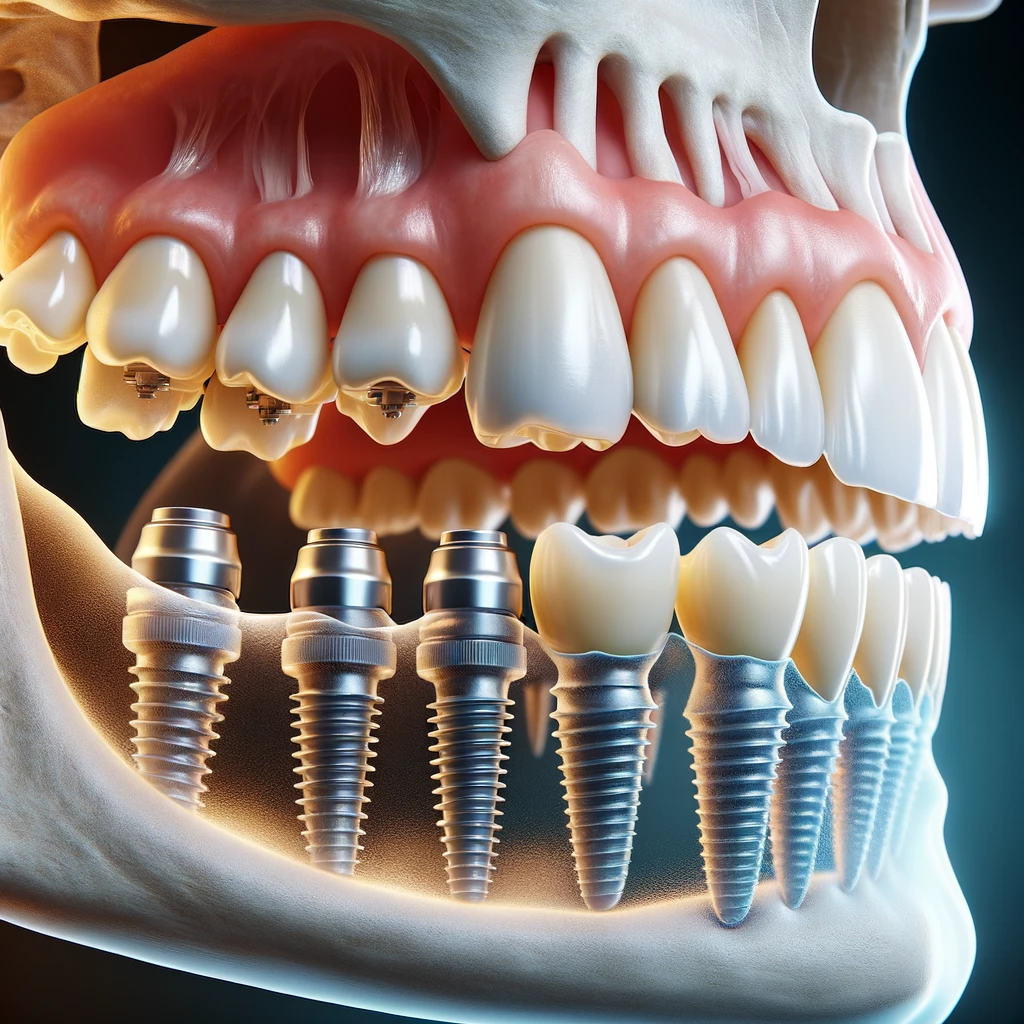Dental Sense Fundamentals Explained
Dental Sense Fundamentals Explained
Blog Article
Not known Facts About Dental Sense
Table of ContentsRumored Buzz on Dental SenseThe Main Principles Of Dental Sense Get This Report about Dental SenseNot known Details About Dental Sense
are clinical gadgets operatively implanted into the jaw to recover a person's capacity to eat or their appearance. They provide support for synthetic (fake) teeth, such as crowns, bridges, or dentures. When a tooth is lost due to injury or illness, an individual can experience difficulties such as rapid bone loss, malfunctioning speech, or changes to eating patterns that lead to pain.Oral dental implant systems are composed of an oral implant body and dental implant joint and might likewise consist of a joint addiction screw. Front tooth filling. The dental implant body is surgically placed in the jawbone instead of the tooth's origin. The oral implant abutment is usually affixed to the dental implant body by the joint addiction screw and expands with gums into the mouth to support the attached synthetic teeth
(https://trello.com/w/dentalsense11/members)Structure of The Dental Implant System selecting oral implants, talk to your oral provider about the possible benefits and risks, and whether you are a candidate for the treatment. Points to consider: Your total health is a crucial consider establishing whether you are a good prospect for dental implants, how much time it will certainly require to heal, and the length of time the dental implant might remain in area.
Smoking might influence the recovery process and lower the long-lasting success of the implant. The recovery process for the dental implant body may take several months or longer, throughout which time you normally have a short-term abutment instead of the tooth. the dental implant procedure: Carefully adhere to the dental hygiene directions provided to you by your dental service provider.
Getting The Dental Sense To Work
Implant failure can lead to the demand for an additional operation to fix or replace the implant system. Restores the capability to eat Recovers aesthetic appearance Aids maintain the jawbone from reducing due to bone loss Protects the health of the bordering bone and gums Aids maintain surrounding (close-by) teeth steady Enhances lifestyle Damages to surrounding all-natural teeth throughout dental implant positioning Injury to the surrounding tissues throughout surgery, such as sinus perforation Injury during surgery (for instance, fracture of surrounding jawbone) Poor feature, such as seeming like the teeth do not bite with each other normally An experience that the tooth is loosened or turning in position resulting from a joint screw loosening up Implant body failure (looseness of the dental implant body) due to systemic infection, which might be most likely in clients with unchecked diabetes mellitus as a result of neighborhood infection in bone and gums supporting the dental implant body because of delayed recovery, which may be most likely in people that smoke Problem cleaning the gums around the original site implant, resulting in inadequate dental health Unattended periodontal condition Post-surgical tingling due to nerve impingement or damage Constantly alert healthcare providers and imaging professionals that you have oral implants before any kind of magnetic vibration imaging (MRI) or x-ray procedures.
FDA is not knowledgeable about any type of unfavorable events reported for MRI or x-ray treatments with dental implants. Dental implants systems are usually made of products that adhere to worldwide consensus criteria of the International Organization for Standardization (ISO) or ASTM International. These criteria have information of what makes a safe product.

A dental implant is a framework that replaces a missing out on tooth. With screw-like gadgets, the cosmetic surgeon inserts a dental implant into the jawbone, and it functions as an anchor for a fabricated tooth, called a crown. A device called a joint attaches the fabricated tooth to the dental implant. The crown is custom-made to fit the individual's mouth and match the shade of their teeth.
The 3-Minute Rule for Dental Sense
Some individuals are not qualified for oral implant surgery. It is for oral cosmetic surgeons to run on individuals with: acute illnessuncontrollable metabolic diseasebone or soft tissue illness or infectionIf these issues are resolved, an individual can have the surgical treatment. In, oral cosmetic surgeons avoid running on individuals with: If individuals with any one of the above undergo dental implant surgical treatment, there is a greater threat of the implant stopping working.

Dental implant surgery is a personalized process. It's not the very same for everyone. Yet the following provides a basic introduction of what you can anticipate your dental expert, oral cosmetic surgeon, periodontist or prosthodontist to do: Put the implant operatively. Offer you time to heal. Affix the article and last crown, bridge or denture.
Next, your specialist will very carefully place the dental implant into your jaw. If your implant is near the front of your mouth, your dental professional will make a temporary tooth for you to use up until you recover.
Some Ideas on Dental Sense You Should Know
Your provider can inform you what to anticipate in your scenario. Throughout the recovery phase, your jawbone should fuse to the oral implant. This procedure, called osseointegration, is important for security and long-lasting success. This procedure can take anywhere from 3 to nine months. Sometimes, it may take longer.
Once your dental implant heals, your dental professional can attach the abutment (small adapter blog post) and your last reconstruction (crown, bridge or denture). This usually takes about one hour to finish and may require a 2nd small surgical procedure. You should not feel any type of pain during your dental implant procedure since your provider will certainly utilize drug to numb your gums.
Report this page